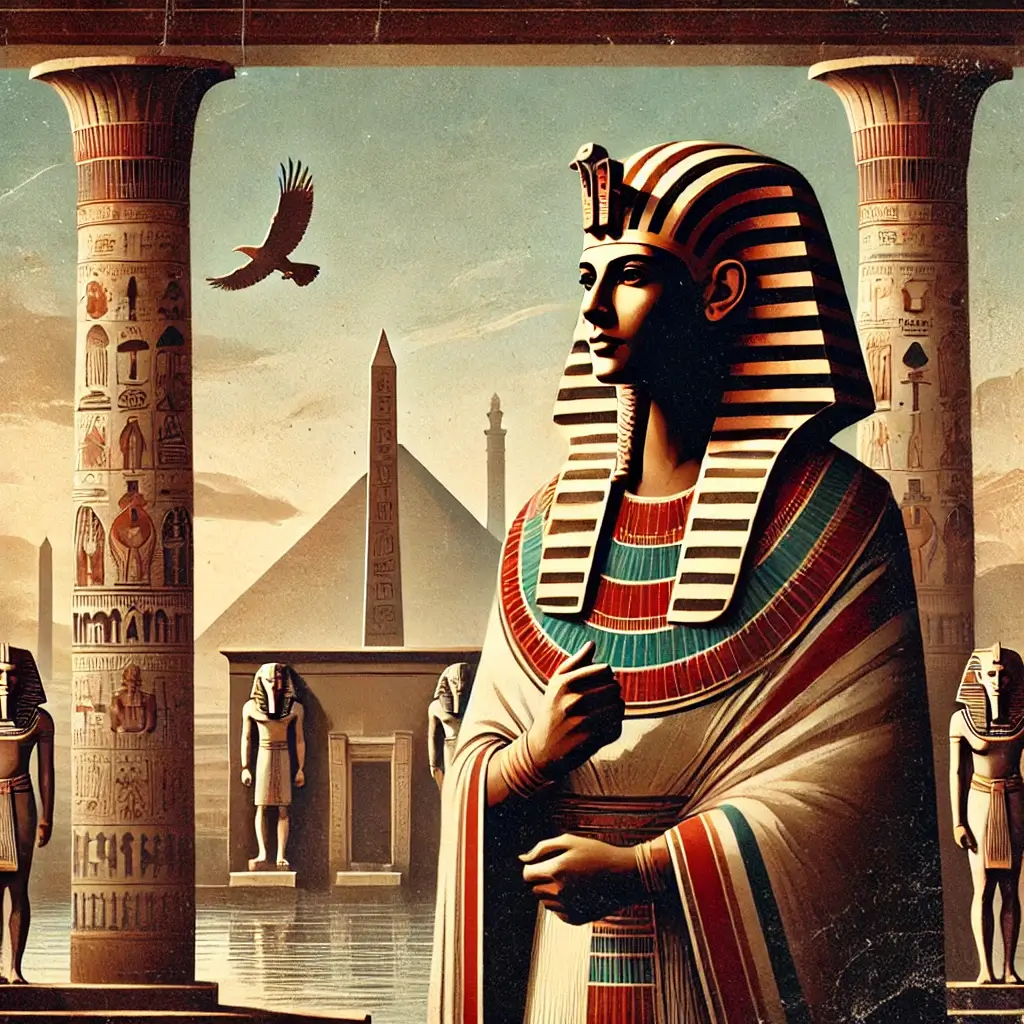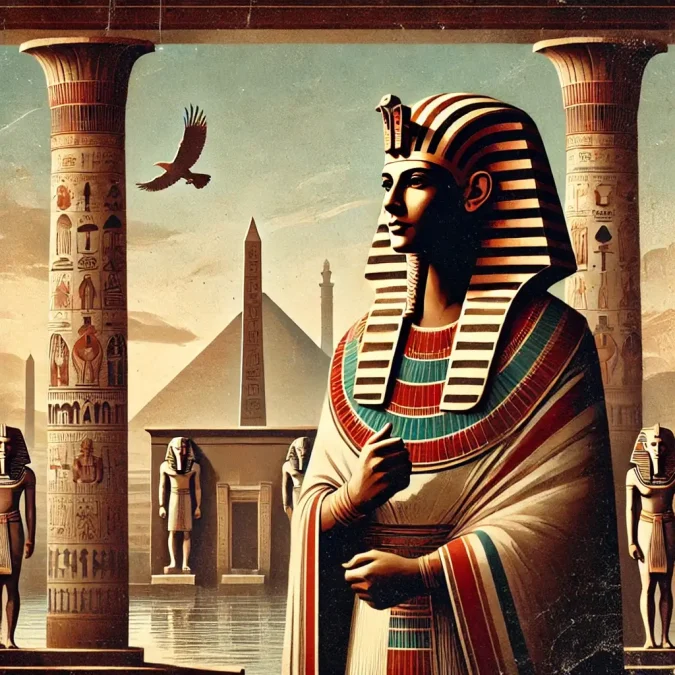
The Twenty-Eighth Dynasty of Egypt, also known as Dynasty XXVIII, the 28th Dynasty, or Dynasty 28, is typically classified as the third dynasty of the Ancient Egyptian Late Period. This dynasty lasted from 404 BC to 398 BC and included only one pharaoh, Amyrtaeus (also known as Amenirdis, Psamtik V, or Psammetichus V). Despite its short duration, the Twenty-Eighth Dynasty marked an important moment in Egyptian history, as it represented a successful revolt against Persian domination and the brief restoration of native Egyptian rule after the fall of the Twenty-Seventh Dynasty, which was part of the Achaemenid Persian Empire.
In this article, we will explore the historical background of the Twenty-Eighth Dynasty, provide a detailed account of its sole ruler, Amyrtaeus, and examine the political and cultural context of his reign. We will also delve into the significance of this brief period of native rule and how it set the stage for subsequent developments in the Late Period of ancient Egypt.
Historical Background of the Twenty-Eighth Dynasty
The Twenty-Seventh Dynasty of Egypt, also known as the First Egyptian Satrapy, was established following the Persian conquest of Egypt by Cambyses II in 525 BC. Egypt became a province, or satrapy, of the Achaemenid Empire, and the Persian kings ruled as pharaohs, often facing resistance and rebellion from the native Egyptian population. The Persian rule was marked by heavy taxation, cultural insensitivity, and a lack of respect for Egyptian traditions, which fueled widespread discontent among the Egyptians.
By the late fifth century BC, the Achaemenid Empire faced internal challenges, including revolts and succession crises, which weakened its ability to maintain control over distant territories like Egypt. The growing dissatisfaction among the Egyptian population, combined with the weakening of Persian authority, created an opportunity for native Egyptian leaders to assert their independence and expel the Persians from Egypt.
Amyrtaeus, a native Egyptian ruler from Sais, capitalized on this opportunity and led a successful revolt against the Persian administration. In 404 BC, Amyrtaeus expelled the Persians from Egypt and declared himself pharaoh, marking the beginning of the Twenty-Eighth Dynasty. This brief period of native rule was significant because it represented the first successful expulsion of the Persians and the restoration of Egyptian independence after more than a century of foreign domination.
Amyrtaeus: The Sole Ruler of the Twenty-Eighth Dynasty
The Twenty-Eighth Dynasty consisted of only one ruler, Amyrtaeus, who reigned from 404 BC to 398 BC. Below, we provide a detailed summary of Amyrtaeus’s life, reign, and achievements.
1. Amyrtaeus (404–398 BC)
Amyrtaeus, also known as Amenirdis, Psamtik V, or Psammetichus V, was the sole ruler of the Twenty-Eighth Dynasty of Egypt. He was likely the grandson of another Amyrtaeus of Sais, who had participated in a previous rebellion against the Persians in 465–463 BC alongside Inarus, the grandson of Psamtik III. Amyrtaeus’s family had a history of resistance against Persian rule, and his successful revolt against the Achaemenid Empire was the culmination of decades of resistance by native Egyptian leaders.
Amyrtaeus’s rise to power was marked by his leadership of a rebellion against the Persian satrapy in Egypt. Taking advantage of the instability within the Achaemenid Empire, Amyrtaeus led a successful campaign to expel the Persians and restore native rule in Egypt. In 404 BC, he declared himself pharaoh and established his capital at Sais, the traditional center of power for the rulers of the Twenty-Sixth Dynasty.
Amyrtaeus’s reign was relatively short, lasting only six years, and was characterized by efforts to maintain independence from the Achaemenid Empire and stabilize the country after the expulsion of the Persians. Little is known about the specific events of his reign, as few records from this period have survived. However, it is believed that Amyrtaeus faced challenges from both internal and external forces, as the Persians sought to regain control of Egypt and other local leaders vied for power.
One of the key aspects of Amyrtaeus’s reign was his attempt to restore the cultural and religious traditions of ancient Egypt that had been disrupted during the period of Persian rule. Amyrtaeus likely supported the priesthoods of the traditional gods and sought to legitimize his rule by emphasizing his connection to the ancient pharaohs. Despite his efforts, Amyrtaeus’s reign was ultimately short-lived, and he was unable to establish a stable and lasting dynasty.
In 398 BC, Amyrtaeus was overthrown by Nepherites I, who founded the Twenty-Ninth Dynasty of Egypt. The circumstances of Amyrtaeus’s downfall are not well-documented, but it is likely that his inability to secure widespread support and the ongoing challenges from both internal and external forces contributed to his removal from power. Amyrtaeus’s brief reign, however, remains significant as a symbol of Egyptian resistance to foreign domination and the desire for independence.
The Political and Cultural Context of the Twenty-Eighth Dynasty
The Twenty-Eighth Dynasty of Egypt was a period of political upheaval and cultural revival. After more than a century of Persian rule, the Egyptians sought to restore their cultural heritage and reassert their independence. The brief reign of Amyrtaeus was marked by efforts to stabilize the country, restore traditional religious practices, and resist the return of Persian control.
The Rebellion Against Persian Rule
The success of Amyrtaeus’s rebellion against the Persian satrapy in Egypt was a significant achievement, as it marked the first time that the Egyptians had successfully expelled the Persians and restored native rule. The rebellion was fueled by widespread dissatisfaction with Persian rule, which was characterized by heavy taxation, cultural insensitivity, and the presence of foreign officials in positions of power. The Egyptians, who had a deep sense of pride in their cultural heritage, resented the imposition of foreign rule and sought to reestablish their independence.
Amyrtaeus’s ability to capitalize on the internal challenges faced by the Achaemenid Empire, including revolts and succession crises, was crucial to the success of his rebellion. The weakening of Persian authority provided an opportunity for native Egyptian leaders to assert their independence and expel the foreign rulers. Amyrtaeus’s success in doing so was a significant moment in Egyptian history, as it demonstrated the resilience and determination of the Egyptian people to regain control of their own destiny.
Cultural Revival and Religious Restoration
One of the key aspects of the Twenty-Eighth Dynasty was the attempt to restore the cultural and religious traditions of ancient Egypt that had been disrupted during the period of Persian rule. The Achaemenid kings had often shown little respect for Egyptian religious institutions, and their rule was marked by a lack of support for the traditional priesthoods and temples. As a result, the Egyptians sought to revive their cultural heritage and reestablish the religious practices that had been an integral part of their society for millennia.
Amyrtaeus likely supported the restoration of temples and the priesthoods of the traditional gods, including Amun, Ra, and Osiris. By doing so, he sought to legitimize his rule and present himself as the rightful successor to the ancient pharaohs. The emphasis on religious restoration was an important aspect of Amyrtaeus’s reign, as it helped to reinforce the connection between the pharaoh and the divine, which was central to the concept of kingship in ancient Egypt.
Despite his efforts, Amyrtaeus’s reign was too short to achieve a full cultural revival, and many of the challenges that had faced Egypt during the period of Persian rule persisted. However, his attempts to restore the cultural heritage of Egypt set the stage for subsequent rulers, who would continue to promote the traditional religious practices and cultural values of the ancient Egyptian civilization.
The Significance of the Twenty-Eighth Dynasty
The Twenty-Eighth Dynasty of Egypt, though short-lived, was significant for several reasons. It represented the first successful expulsion of the Persians from Egypt and the restoration of native rule after more than a century of foreign domination. The reign of Amyrtaeus symbolized the resilience of the Egyptian people and their desire for independence, as well as their commitment to preserving their cultural heritage.
The Twenty-Eighth Dynasty also set the stage for subsequent developments in the Late Period of ancient Egypt. The expulsion of the Persians and the restoration of native rule provided a brief period of stability and cultural revival, which would be built upon by the rulers of the Twenty-Ninth and Thirtieth Dynasties. These dynasties would continue the efforts to maintain Egypt’s independence and restore its cultural and religious traditions, even as the threat of foreign invasion loomed large.
The brief reign of Amyrtaeus also highlighted the challenges faced by native Egyptian rulers during the Late Period. The ongoing threat of Persian invasion, combined with internal divisions and power struggles, made it difficult for any single ruler to maintain control over the country for an extended period. Despite these challenges, the Twenty-Eighth Dynasty remains an important chapter in the history of ancient Egypt, as it represents a moment of resistance and resilience in the face of foreign domination.
Conclusion
The Twenty-Eighth Dynasty of Egypt, though brief, marked an important moment in the history of the Late Period. Led by Amyrtaeus, the sole ruler of the dynasty, this period represented the successful expulsion of the Persians and the restoration of native rule after more than a century of foreign domination. Amyrtaeus’s reign was characterized by efforts to stabilize the country, restore traditional religious practices, and resist the return of Persian control.
Despite its short duration, the Twenty-Eighth Dynasty was significant as a symbol of Egyptian resistance to foreign domination and the desire for independence. The cultural revival and religious restoration initiated by Amyrtaeus set the stage for subsequent developments in the Late Period, as the rulers of the Twenty-Ninth and Thirtieth Dynasties continued the efforts to restore Egypt’s cultural heritage and maintain its independence.
The legacy of the Twenty-Eighth Dynasty lies in its role as a brief but important chapter in the history of ancient Egypt, characterized by resilience, resistance, and the ongoing struggle for autonomy. Amyrtaeus’s successful revolt against Persian rule and his efforts to restore the cultural and religious traditions of Egypt serve as a testament to the enduring spirit of the Egyptian people and their commitment to preserving
